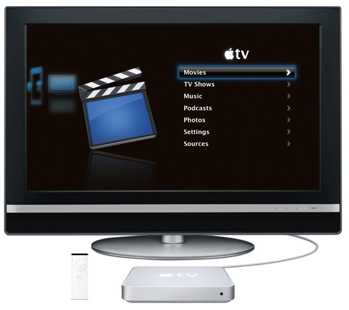Latest News
Is Ad-Supported Internet News “Morally Abhorent”?
Feb 6th, 2009 | By Elisabeth Lewin | Category: Commentary, Featured Story, The New Media Update  TIME Magazine’s former managing editor, Walter Isaacson, writes in the current issue of Time magazine, that newspapers (and, by extension, newsmagazines, too) are in crisis, even though readership is up significantly.
TIME Magazine’s former managing editor, Walter Isaacson, writes in the current issue of Time magazine, that newspapers (and, by extension, newsmagazines, too) are in crisis, even though readership is up significantly.
Huh? Why this disconnect?
“Fewer of these consumers are paying,” he says. “Instead, news organizations are merrily giving away their news.”
Isaacson conjures the ghost of Time magazine co-founder Henry Luce, who considered “morally abhorrent” those freebie news publications that relied on advertising revenue as its sole funding source. Continues Isaacson (channeling the spirit of Luce),
“good journalism required that a publication’s primary duty be to its readers, not to its advertisers. In an advertising-only revenue model, the incentive is perverse.
It is also self-defeating, because eventually you will weaken your bond with your readers if you do not feel directly dependent on them for your revenue. “
Isaacson says the business model of publishing news online at no cost to readers (content supported by ads) “doesn’t make sense.”
In the olden golden days of publishing, he explains, publishers had a three-sided revenue base:
- newsstand purchases,
- reader subscriptions,
- and advertising revenues.
The last several years have seen newsstand purchases and subscriptions dwindle. A boom in Internet advertising in recent years seemed initially to make up for the lack. But, as Internet ad revenues declined for news outlets in the last quarter of 2008, that one remaining healthy funding source – advertising – took on an unhealthy pallor.
Isaacson, now CEO of the Aspen Institute, calls for news organizations to return to the “bold, old” business model of “getting paid by users for the services they provide and the journalism they produce.”
This echoes what we saw earlier this week, when the New York Times’ executive editor Bill Keller discussed the Times’ consideration of micropayments, charging for premium online content, and other moneymaking schemes.
However, few news organizations are succeeding with the pay-for-online-access revenue model. Consumers of media (whether it is news or entertainment or anything else) have grown to expect free, unfettered access to content. We time-shift our television watching, gather news from sources around the world, and seek out entertainment, and expect to do this for free.
Certainly, Isaacson and Keller are right in this respect: well-reported, well-researched journalism is valuable. Creators and publishers of that news content need to be rewarded for their labors and expertise.
Is a strictly ad-supported media universe “morally abhorrent”? If this revenue model is abhorrent (or, in a sagging global economy, unworkable), how else do news organizations fund the work they do?
Photo: Lewis W. Hine, 1910, Library of Congress via bobster1985
Jack Black’s Secrets Of Getting Awesome Sound For Your Videos
Feb 5th, 2009 | By James Lewin | Category: Internet TV, Podcasting Hardware, Video
When you think Jack Black, you probably think awesome sounding sound, right?
So there’s nobody better qualified to teach you the secrets of getting awesome sound for your videos than Jack Black. Other than maybe a sound guy.
Anyway, this video features Jack Black offering his tips on getting awesome sound for your videos. And if you’re an audio podcaster, most of this stuff probably applies to you, too.
Except for the part about keeping the mic out of the frame.
Joss Whedon Doubles His Money With The Help Of ‘Dr. Horrible’
Feb 5th, 2009 | By Elisabeth Lewin | Category: Video, Video Podcasts  Knowledge@Wharton, the University of Pennsylvania business school’s online journal, has a great interview with televsion producer Joss Whedon. Whedon, the screenwriter/head writer of the “Buffy The Vampire-Slayer” movie and television series, creator of cult favorite “Firefly” and its movie counterpart “Serenity,”talked with the magazine about his recent web-only miniseries, “Dr Horrible’s Sing-Along Blog.”
Knowledge@Wharton, the University of Pennsylvania business school’s online journal, has a great interview with televsion producer Joss Whedon. Whedon, the screenwriter/head writer of the “Buffy The Vampire-Slayer” movie and television series, creator of cult favorite “Firefly” and its movie counterpart “Serenity,”talked with the magazine about his recent web-only miniseries, “Dr Horrible’s Sing-Along Blog.”
The whole article is worth reading, but what really caught my attention was Whedon’s explanation of the financial aspect of “Dr. Horrible,” and how/whether the popular story might “serve as a model for similar original content.”
“Dr. Horrible” was written by Whedon and some family members and friends, and was produced on a shoestring budget of around $200,000. The actors donated their talent, as did some of the production department heads (who, he says “could [afford to] do this on a lark.”). The crew were paid for their work. The people who worked for free were offered a percentage of future earnings “as soon as we got in the black.”
Whedon continues, “We said we were going to roll it out for free and then put it on iTunes. We just steamrolled past everybody’s idea of how you market and of how long it takes to do these things. We had people [drawing up] contracts in days that usually take months, because we were tired of people sitting around.”
It worked out well for the production members who donated their time, since “Dr. Horrible” has, via iTunes, a DVD with added features, and streamed over the Web with advertising, made back what Whedon says is “probably about twice what the original budget was.”
Expounding more on “monetizing” content on the Internet, Whedon continues,
“When the studios talk about the difficulty of monetizing the Internet, they’re not lying. There are a lot of paradigms wherein you aren’t making that much money. But it’s all pure money for them because they have these libraries they can just put on. They’re really not interested in putting on original stuff because they can just throw the libraries on and make free money off of that. None of us is in that position.
<snip>
“I’m not a business man. I’m also not a techie. My ideas on how to monetize the Internet for independent productions are ideas that other people have already had. But I am in a position to try to take advantage of them in such a way that we get a toehold in this medium and [establish] a system of creating some original content before the giant companies sweep in and fence it all off.
“The movies, TV — everything is melding, everything is shifting. If you saw it on a movie screen, it’s going to be on your phone. That territory is moving … now in a destructive way because we’re losing residuals. But eventually it’s just going to be an inevitability that … the studios are going to have to rethink how they monetize [content]. Obviously TiVo makes their relationship with advertisers different. And that’s going to become more and more the case. A lot of it can’t be predicted — at least, not by me.
“But if somebody isn’t out there creating a system wherein independent production can thrive, it will wither.”
Piper Jaffray Forecasts Apple Planning ‘Connected Television’, Skeptics Disagree
Feb 5th, 2009 | By Elisabeth Lewin | Category: Digital Movie Store, Digital Video Recorder, Internet TV, VideoApple Insider says that investment bank Piper Jaffray expects Apple to introduce networked tv, along with an Apple TV set-top DVR box later this year.
Apple has consistently denied interest in such markets, however.
“We expect Apple to design a connected television over the next two years (launching in 2011) with DVR functionality built in,”Piper Jaffray analyst Gene Munster wrote in a lengthy research report released earlier on Thursday. “These recorded shows could then sync with Macs, iPhones and iPods over a wireless network.”
Munster posits that a “connected television” device would further cement Apple’s position in the digital living room, by making available interactive TV, music, movie, and gaming features in one piece of hardware. Apple could also develop a television set that stands out from the competition, making use of its iTunes Music Store.
“Apple could effectively replace the home entertainment system (including a music stereo, cable box, Blu-ray/DVD player, and gaming console) with an all-in-one Apple television,” Munster wrote. Apple could distinguish itself among TV makers with software that makes setup of complicated home entertainment devices as simple as using its existing Apple TV product.
The analyst sees the company setting the stage for introducing these kind of new living room entertainment products, by year’s end, with a new version of its Apple TV set-top-box that will include DVR software for recording live television.
Although Apple maintains that Apple TV is still one of its hobbies, rather than a core product, Munster estimates the company will sell 6.6 million of the devices during the current calendar year, up from an estimated 2.1 million units last year.
Apple’s self-characterization of AppleTV as a “hobby” is borne out in reality. Apple 2.0’s Phillip Elmer-DeWitt characterizes the device as a laggard in the field, saying “Although sales of the device tripled last quarter, thanks largely to movie rentals, it is still a minor player in the transition from the old distribution paradigms to the new.”
This contradicts Piper Jaffray’s Munster. He gives a more optimistic spin looking at the same sales numbers, extrapolating “throughout calendar 2009, [indicating] Apple TV units of over 6 million [sales] in calendar 2009.”
The report, while founded in concrete knowledge of Apple earnings calls, DVR and TV patent filings, agreements with LCD manufacturer LG Electronics, and the large and growing customer base of iTUnes users and Apple TV owners, is largely an optimistic forecast “based on conjecture,” as Apple Insider puts it.
Daniel Eran Dilger, in a story at Roughly Drafted Magazine, analyzes these possible new additions to Apple’s television offerings, and says that they are awful ideas, taking AppleTv and “converting it from a fun hobby into a burdensome money pit failure.”
His suggestions for more “sensible” additions to the next upgrade of Apple TV would include iTunes radio features, “alternative” content (like podcasts), HDTV mini-games, and more support for user-generated content. His idea to launch an Apple TV SDK, “a way for third parties to build modules that run on the device”, is especially tantalizing.
What do you think the advancements for the Apple TV (or other Apple television-content-consuming device?)? Will Apple TV remain a “hobby,” or will it step into the competitive TV fray?
One Million Xbox LIVE Members Download and Activate Netflix on Xbox 360
Feb 5th, 2009 | By Elisabeth Lewin | Category: Digital Movie Store, Internet TV, Streaming Video, Video  Software giant Microsoft and movie rental behemoth Netflix today announced that 1 million Xbox LIVE Gold members have downloaded and activated Xbox LIVE application from Netflix in the three months since the initiative launched last November.
Software giant Microsoft and movie rental behemoth Netflix today announced that 1 million Xbox LIVE Gold members have downloaded and activated Xbox LIVE application from Netflix in the three months since the initiative launched last November.
The Netflix application allows Xbox LIVE Gold members to instantly watch movies and TV episodes rented from Netflix via the Xbox 360 video game and entertainment system. Xbox LIVE Gold members who are also Netflix unlimited members can watch movies and TV episodes streamed from Netflix on Xbox LIVE for no additional fee.
Xbox 360 is, so far, the only gaming and entertainment console with movie rental capabilities via Netflix.
However, other companies are rushing into the content-rental space, including Roku, which recently added access to Amazon movie and TV content to its set-top box. At CES last month, Netgear announced a more powerful Internet-connected set-top boxes. Apple TV has been offering streaming and download of movies and TV shows via Apple’s iTunes Music Store.
In addition to Netflix in the United States, Xbox LIVE Video Marketplace offers over 17,000 other episodes of content to the Xbox LIVE community. More than 12,000 movies and TV episodes are currently available via Netflix, with more on the way. Microsoft says that in the period from December 2008 to January 2009, Xbox LIVE Video Marketplace downloads have grown 174 percent year over year.
December Sets Record For U.S. Online Video Viewing; Surges 13%
Feb 4th, 2009 | By Elisabeth Lewin | Category: General, Internet TV, Streaming Video, Video, Video Podcasts  Internet traffic measurement company comScore today released data from their December 2008 “comScore Video Metrix” service, indicating a huge jump in Internet video-viewing among US Internet users. A record 14.3 billion online videos were viewed during the month, representing an increase of 13 percent over November’s viewing stats.
Internet traffic measurement company comScore today released data from their December 2008 “comScore Video Metrix” service, indicating a huge jump in Internet video-viewing among US Internet users. A record 14.3 billion online videos were viewed during the month, representing an increase of 13 percent over November’s viewing stats.
YouTube led the Internet video portals, accounting for 49% of the incremental gain in December videos viewed versus the previous month.
In December, Google sites ranked as the top U.S. “video property,” with 5.9 billion videos viewed (41% online video market share), thanks to YouTube.com, which accounted for more than 99 percent of all videos viewed at the property.
Fox Interactive Media ranked a distant second with 445 million videos (3.1%), followed closely by Yahoo! sites with 330 million (2.3%) and Viacom Digital with 291 million (2.0%).
Hulu continued its growth trajectory, climbing 6 percent over its November viewing numbers, to 241 million videos viewed.
Despite ranking fifth among video properties for number of videos viewed in December, it should be noted that Hulu scored the longest average duration for individuals’ online video viewing, just over 10 minutes.
Nearly 100 million YouTube video viewers (98.9 MM) watched 5.9 billion videos, for an average of 59 apiece. That’s a lot of tranquilized preschoolers, and dramatic rodents being viewed.
In terms of unique viewers of Internet video, nearly 150 million U.S. Internet users watched an average of 96 videos apiece in December 2008. Google sites crossed the 100 million online video viewer mark during the month, representing two out of every three Internet users who watched video. Fox Interactive ranked second with 56.9 million viewers, followed by Yahoo! Sites (42.8 million) and AOL LLC (31.5 million).
Other notable findings from December 2008 include:
Read more »
Association Of Music Podcasting Now On Twitter
Feb 4th, 2009 | By James Lewin | Category: Digital Music, Microblogging, Podcast-Legal Music  The Association Of Music Podcasting – a group of music podcasters who want to promote music via podcasts – is now on Twitter.
The Association Of Music Podcasting – a group of music podcasters who want to promote music via podcasts – is now on Twitter.
If you’re interested in using or listening to music in podcasts, check them out:
AMP postings and news are now available via twitter. Go to
http://twitter.com/musicpodcasting to follow the latest information.
Checkout the hashtags.. #musicpodcasting and #amped
If you haven’t yet – follow us at @podcastmama & @podcasting_news, too!
Print Media Deathwatch: NYT Ponders (Again) Charging For Online News
Feb 3rd, 2009 | By Elisabeth Lewin | Category: General, The New Media Update  Venerable newspaper The New York Times is considering charging readers for access to its website, less than two years after discontinuing an earlier Times Select online-subscription service.
Venerable newspaper The New York Times is considering charging readers for access to its website, less than two years after discontinuing an earlier Times Select online-subscription service.
In an online question-and-answer session, Bill Keller, the Times’ executive editor, discussed how the newspaper has been debating whether to charge for online access to the newspaper’s content:
As most of you know, a few years ago The Times introduced a subscription service called Times Select. We put our columnists and our archives behind a wall and charged admission to anyone who was not a print subscriber. Times Select generated something like $10 million a year, which was real money, but in the end the company calculated that we’d be better off taking down the wall and letting the flood of additional visitors to the Web site attract advertising dollars. The lesson of that experiment, however, was not that readers won’t pay for content. A lot of people in the news business, myself included, don’t buy as a matter of theology that information “wants to be free.” Really good information, often extracted from reluctant sources, truth-tested, organized and explained — that stuff wants to be paid for. So far, it gets paid for mainly by advertisers, but a lively, deadly serious discussion continues within The Times about ways to get consumers to pay for what we make.
Keller goes on to talk about three frequently-discussed revenue models:
- A subscription model in the mode The Wall Street Journal or the Financial Times, with some premium content “behind the wall.”
- A “micro-payment” model, where the user is charged “a few pennies” whenever they click on a page.
- Content delivery via “new reading devices” like the Kindle. “The Times currently makes a modest amount of money selling a downloadable newspaper for Kindle users and for subscribers to a service called Times Reader.”
The suggestion comes amid growing reports of the newspaper’s financial difficulties. A declining world economy and dwindling advertising revenues are hitting the newspaper industry hard. The Times recently announced that it would use its landmark headquarters building as collateral for an operating loan.
The Q & A article is thought-provoking, and worth a read, not just for the discussion of changing revenue models for the Times. Keller also voices opinions on what he calls the “diminishing supply” of “quality” journalism, as more print media lay off reporters, and more “voices [bloggers?] riffing on the journalism of others.”
In related news, Bloomberg says that New York Times “has hired Goldman Sachs Group Inc. to help sell its minority stake in the Red Sox and is in talks with investment company W.P. Carey & Co. for a sale-leaseback deal involving its main office that could raise as much as $225 million.”
Image:Â Thomas Claveirole
Medical Podcast Network Serves Up Audio and Video To Health Care Professionals
Feb 3rd, 2009 | By Elisabeth Lewin | Category: Podcasting, Podcasting Networks, Video  Medical news-gathering site ProMedNetwork announced its launch this week. The site offers medical professionals access to the latest news and information in the way of free audio and video content produced by and for health care professionals. The company sees its main audience being EMTs, nurses, physicians, technologists, psychologists, medical residents and other health care providers.
Medical news-gathering site ProMedNetwork announced its launch this week. The site offers medical professionals access to the latest news and information in the way of free audio and video content produced by and for health care professionals. The company sees its main audience being EMTs, nurses, physicians, technologists, psychologists, medical residents and other health care providers.
The ProMedNetwork boasts news gathered from a broad range of health care industry information sources, and include podcasts, Internet radio and (Web) TV programs. An “advanced feature” of the site allows the user to listen to the podcast, radio or video program while still surfing the Internet or continuing work on the computer.
Jamie Davis, managing director of the ProMed Network says the site already reaches 100,000 medical professionals a month nationwide. Mobile medical reference software company Lexi-Comp is the official commercial launch sponsor of the ProMed Network.
Podcast service provider RawVoice provides the server infrastructure for the website, along with access to their new media statistics measurement service, and Raw Voice’s “Podcast Advertising Management System.” Raw Voice CEO Todd Cochrane praises ProMed’s sponsorship deal, saying that it ” validates our knowledge that vertical markets work well in the new media space.”
Association for Downloadable Media Members Adopt Standards and Measurement Guidelines
Feb 2nd, 2009 | By Elisabeth Lewin | Category: New Media Organizations, Podcasting, Video Podcasts  The Association for Downloadable Media (ADM) today released a list of association members from across the downloadable and new media industry, all of whom are in voluntary support of the preliminary standards and guidelines agreed upon by the organization. ADM officials characterize this as “another step toward creating a landscape favorable to the commercialization” of web-delivered shows.
The Association for Downloadable Media (ADM) today released a list of association members from across the downloadable and new media industry, all of whom are in voluntary support of the preliminary standards and guidelines agreed upon by the organization. ADM officials characterize this as “another step toward creating a landscape favorable to the commercialization” of web-delivered shows.
The members endorsing this set of measurments and ad standards come from across the podcast and new media industry, and include marketers and ad agency people, podcast networks, individual content creators, and non profit organizations.
Both the advertising standards and audience measurement guidelines were created by open committees, then offered for public comment and feedback, and finally edited and ratified by the organization. Many of the organization’s members had already been following these formats. Now the member organizations advocate that these standards be adopted more widely across the podcast/new media industry. They argue that this will ease the creation of an organized market for advertisers to launch campaigns and/or become sponsors of episodic podcasts and video series.
The organization’s recommended standards for ad units include pre-, mid- and post-roll insertions, product placement within shows, and host endorsements, chosen from among the twenty-five creative options outlined in the standards document. The recommended measurement guidelines give each member company one of two reporting options, based on how their shows are hosted, either Native Server Measurement (NSM) or Third Party Measurement (TPM).
ADM member organizations who have adopted these standards argue that this simplifies how marketers create ad units, which then can be placed across multiple podcast networks, as well as in the shows of independent content producers, crafting a demographic and/or contextually targeted campaign. In addition, they argue, the audience measurement standards enable audience metrics to be compared more easily, as “apples-to-apples.”
“With the emergence of each new digital media it’s vital to create standardized ad units and measurement. Now that downloadable media companies are adopting these guidelines, ad agencies [are more likely to] include podcasts and vidcasts in their media recommendations.” said Susan MacDermid, SVP, Real Branding.
The ADM, founded in 2007, is open to both corporate and individual content producers, well as non-profits, advertising agencies and “solutions providers” in the portable media industry. Its focus is on the commercialization of web-based content.
Companies which have agreed to offer “at least a portion” of the ad units outlined in the standards document, and to report their audience metrics through one of the two methods outlined, are listed below.
Read more »
